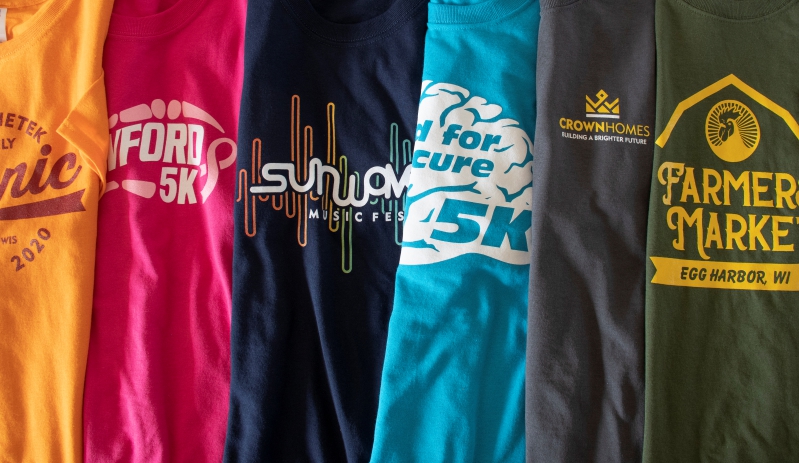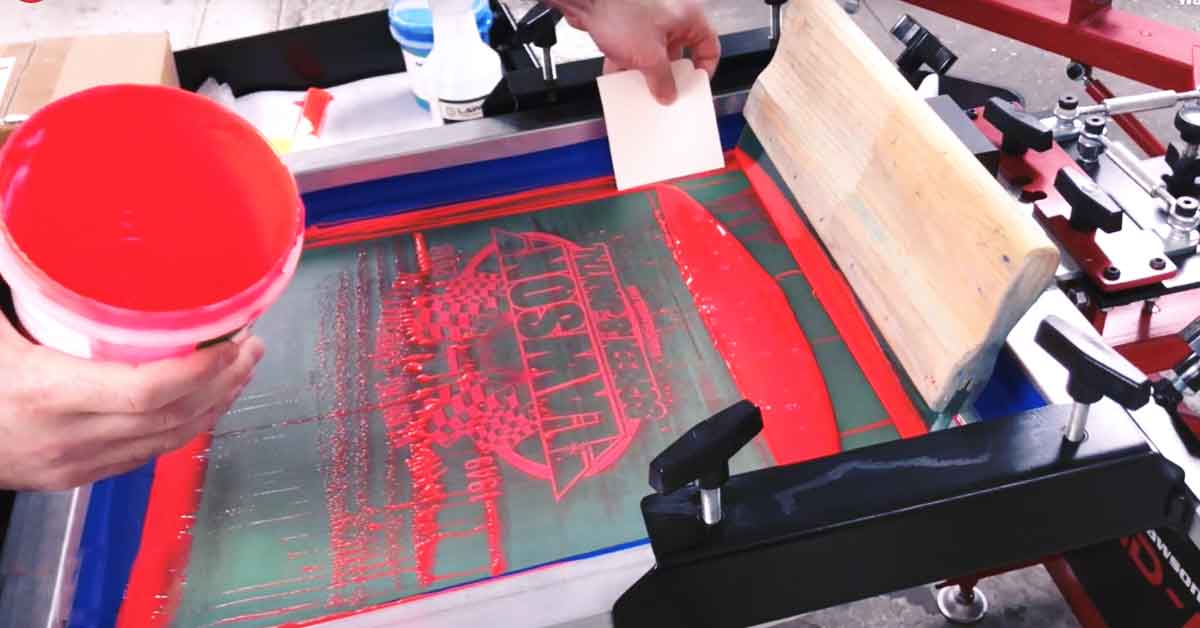Not known Factual Statements About Tx Tees
Wiki Article
4 Easy Facts About Tx Tees Explained
Table of ContentsTx Tees Things To Know Before You BuyAn Unbiased View of Tx TeesThe 30-Second Trick For Tx TeesThe smart Trick of Tx Tees That Nobody is Talking AboutThe Ultimate Guide To Tx TeesIndicators on Tx Tees You Should KnowThe 5-Minute Rule for Tx Tees
That brings your overall to about $1,900 gross and shipping. Build up various other expenses, like the number of energies it takes to run the shop and the price of ink and solution per style. custom monograming. Take the print below. This is a one-color image, so the cost of ink per t-shirt is roughly 20 cents.The solution needs to just be a few cents because you 'd only need to layer one display for this work. Usually, printers attempt to make up to 45% earnings on a print job.

With DTF, you can publish a handful of tee shirts, or just one. Both display printing and DTF have their niches in the world.
Indicators on Tx Tees You Need To Know
The most effective method to understand? Ask about and see what printing shop like your own are doing. custom cap printing. Attempt both out and see which you like better
When you're selecting what kind of printing approach to utilize for printing your art work designs on your garments, it's essential that you recognize the differences between these two methods so you can maximize outcomes while lessening prices. Display printing is one of the most commonly used technique for publishing layouts on textiles.
DTG printing is also called area or direct to garment printing since it publishes only what is required rather than making a display as display printers do. https://myanimelist.net/profile/txtees02. Screen printing functions by screen filler squeegee display printing ink screen mesh screen, then moving the image to garment making use of warmth and/or stress
The DTG printer uses unique dye-sublimation inks that are applied into a pre-designed image by an electronic printing system. The inks come to be part of the material, enabling for lively shades and phenomenal detail. It's additionally referred to as spot or straight to garment printing because it prints just what is needed rather than making a display as display printers do.
Tx Tees Fundamentals Explained
First, it's much quicker - you can publish a fullcolor image in minutes, rather than hours for screen printing. Second, there's no set up time or costs included - you can print any type of style you such as, without having to produce a display. Third, there's no waste - due to the fact that display printers screen print one design at a time, they need to evaluate each color independently.
The paper is really pricey and can just be made use of once. Once it's published on, it has actually to be thrown out. - The first acquisition rate is reduced than the ahead of time financial investment of DTG printers- You can print multi-color styles one screen at a time rather than needing to print each color separately like DTG printing.

What Does Tx Tees Do?
Nevertheless, rather of using screen mesh as display printers do, color sublimation printers use laser innovation to move your pictures onto garments or paper. A heat procedure transfers the dye from its solid-state straight right into the gas phase which subsequently fuses it onto material substratums when they are swiftly heated up to heats under high pressure.Sublimation printing is green. It uses less water than screenprinting, and because it does not involve using dangerous solvents, it's secure for all kinds of clothing. The dye sublimation inks are likewise unsmelling when cured, unlike screen printers that utilize dangerous chemicals throughout the display printing procedure that leave an unpleasant odor.
They also save money on pricey tools like direct exposure devices since dye sublimation printers do not call for a UV direct exposure device or a flash remedy stove that is usually utilized in screen printing (t-shirt printing). What is direct to garment printing (DTG Printing)? DTG printing is a digital screenprinting procedure that prints find directly onto fabric using specialized inkjet printers
The Ultimate Guide To Tx Tees
DTG printing supplies many advantages over standard screenprinting, including the capacity to print photographic quality photos, greater shade vibrancy, and the capacity to publish styles on darker fabrics. DTG printers function by heating the textile ink till it develops into a gas. The gas after that permeates the textile, bonding with the fibers to produce a permanent print.
Display printers just prepare their screen then start publishing up until they run out of product or ink.- There is a variety of knowledgeable display printers throughout the globe, which can be handy for newbies. - It's a slower procedure - screen printers often have to await the ink to completely dry before they can print the following shade- Screen printers require hand-operated labor, so there's a greater discovering contour and it takes longer to create a top quality style- Screen printing isn't as precise as DTG printing, so you might get some "bleeding" of shades from one part of the picture onto one more if not done properly.
10 Simple Techniques For Tx Tees
Instead of using screen mesh as display printers do, dye sublimation printers make use of laser technology to transfer your pictures onto garments or paper. A warmth process moves the dye from its solid-state directly into the gas phase which subsequently merges it onto textile substrates when they are quickly heated to heats under high stress.Sublimation printing is green. It uses much less water than screenprinting, and due to the fact that it doesn't entail the use of unsafe solvents, it's risk-free for all types of apparel. The dye sublimation inks are additionally odorless when treated, unlike display printers that use dangerous chemicals throughout the screen printing process that leave behind an undesirable odor.
They also save money on pricey tools like exposure units considering that color sublimation printers don't need a UV exposure system or a flash treatment stove that is commonly used in screen printing. What is direct to garment printing (DTG Printing)? DTG printing is a digital screenprinting process that publishes straight onto fabric making use of specialized inkjet printers.
Some Known Questions About Tx Tees.
DTG printing provides numerous benefits over traditional screenprinting, consisting of the capacity to print photo top quality photos, higher color vibrancy, and the ability to print designs on darker textiles. DTG printers function by heating up the textile ink until it turns right into a gas. The gas after that penetrates the material, bonding with the fibers to produce a permanent print.Report this wiki page